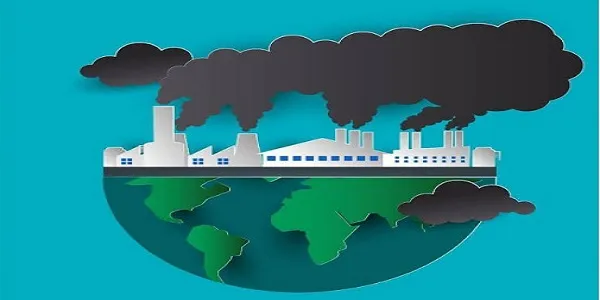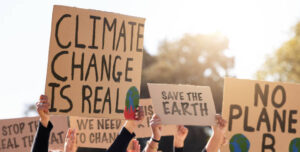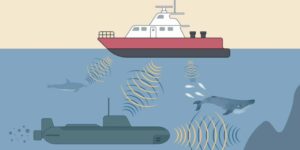Fighting Pollution and Climate Change: Strategies for a Sustainable Future
Introduction
Pollution and climate change are two of the most pressing challenges facing humanity in the 21st century. Together, they represent an intertwined crisis that threatens ecosystems, economies, and human health across the globe. From rising sea levels and melting glaciers to choking smog in cities and increasing plastic waste in oceans, the signs are undeniable. Fighting these crises requires coordinated global action, technological innovation, policy reforms, and community engagement.
In this article, we will explore the root causes of pollution and climate change, their devastating impacts, and the practical solutions available today to build a cleaner and more sustainable future.
Understanding Pollution and Climate Change
What is Pollution?
Pollution refers to the introduction of harmful substances into the environment, disrupting its natural balance. It can take many forms:
-
Air pollution: Emissions from vehicles, industries, and burning fossil fuels.
-
Water pollution: Chemicals, plastics, and untreated sewage contaminating rivers and oceans.
-
Soil pollution: Pesticides, industrial waste, and deforestation harming the land.
-
Noise and light pollution: Human activities affecting ecosystems and health.
What is Climate Change?
Climate change is the long-term alteration of Earth’s climate, primarily driven by human activities such as burning fossil fuels, deforestation, and industrial processes. The excessive release of greenhouse gases (GHGs) like carbon dioxide (CO₂), methane (CH₄), and nitrous oxide (N₂O) traps heat in the atmosphere, leading to global warming.
How They Intersect
Pollution and climate change are deeply connected. For example:
-
Burning coal emits both toxic air pollutants (like sulfur dioxide) and greenhouse gases (like CO₂).
-
Plastic waste in oceans not only harms marine life but also releases methane as it breaks down, contributing to warming.
The Global Impact
On the Environment
-
Rising Temperatures: Average global temperatures have increased by about 1.2°C since pre-industrial times.
-
Melting Ice Caps: Polar regions are shrinking, threatening wildlife and raising sea levels.
-
Deforestation: Loss of forests reduces Earth’s ability to absorb CO₂.
-
Ocean Acidification: Increased CO₂ dissolves in seawater, harming coral reefs and fish species.
On Human Health
-
Respiratory diseases: Air pollution causes millions of premature deaths each year.
-
Heatwaves: Rising temperatures intensify health risks, particularly for vulnerable populations.
-
Waterborne diseases: Polluted water spreads infections like cholera.
On the Economy
-
Agriculture: Droughts, floods, and unpredictable weather affect food production.
-
Infrastructure damage: Extreme weather events cause billions of dollars in losses annually.
-
Energy costs: Rising demand for cooling and disrupted supply chains drive prices up.
Key Drivers of Pollution and Climate Change
-
Fossil Fuel Dependence
Coal, oil, and natural gas are the primary contributors to global greenhouse gas emissions. -
Deforestation and Land Use Change
Forests absorb CO₂, but large-scale logging, farming, and urban expansion destroy this natural carbon sink. -
Industrial and Agricultural Practices
-
Factories emit pollutants into the air and water.
-
Livestock farming produces significant methane.
-
Pesticides and fertilizers degrade soil and contaminate groundwater.
-
-
Waste Management Problems
-
Plastics persist for centuries, breaking into harmful microplastics.
-
Landfills release methane and toxic leachates.
-
-
Overconsumption and Lifestyle Choices
High consumption of energy, fast fashion, and disposable goods increases pollution and resource depletion.
Fighting Pollution and Climate Change: Strategies That Work
1. Transitioning to Clean Energy
-
Renewables: Solar, wind, hydro, and geothermal energy reduce reliance on fossil fuels.
-
Energy efficiency: Smart grids, better insulation, and efficient appliances lower energy demand.
-
Electric mobility: Electric cars, buses, and trains cut emissions from transportation.
2. Sustainable Urban Development
-
Green cities: Urban green spaces absorb CO₂ and reduce heat islands.
-
Public transport systems: Reduce dependence on private vehicles.
-
Smart housing: Eco-friendly building materials and designs minimize waste and pollution.
3. Circular Economy and Waste Reduction
-
Reduce, Reuse, Recycle: Minimizing waste helps lower emissions from production and disposal.
-
Biodegradable alternatives: Replacing plastics with natural materials.
-
Waste-to-energy technologies: Converting waste into usable energy.
4. Sustainable Agriculture
-
Organic farming: Reduces chemical pollution.
-
Precision agriculture: Uses technology to minimize water and fertilizer usage.
-
Agroforestry: Integrating trees with crops increases biodiversity and carbon absorption.
5. Protecting and Restoring Ecosystems
-
Reforestation and afforestation: Planting trees to capture CO₂.
-
Wetland restoration: Wetlands act as natural carbon sinks and filters for pollutants.
-
Marine conservation: Protecting oceans to sustain biodiversity and fisheries.
6. Policy and Global Agreements
-
Paris Agreement: Countries committed to limiting warming to 1.5–2°C.
-
Carbon pricing: Taxes or trading systems to reduce emissions.
-
Pollution regulations: Stricter emission and waste management standards.
7. Technological Innovations
-
Carbon capture and storage (CCS): Traps CO₂ before it enters the atmosphere.
-
Green hydrogen: A clean fuel alternative for industries and transport.
-
AI and big data: Monitoring pollution and predicting climate risks.
8. Individual and Community Actions
-
Lifestyle changes: Using less plastic, reducing energy consumption, eating more plant-based foods.
-
Awareness campaigns: Education empowers people to make eco-friendly choices.
-
Grassroots movements: Communities pushing governments and corporations for change.
Success Stories from Around the World
-
Costa Rica’s Renewable Energy Model
Costa Rica generates nearly all of its electricity from renewable sources, setting a global benchmark. -
China’s War on Air Pollution
Strict emission standards and a focus on electric vehicles have significantly improved air quality in major cities. -
Plastic Ban in Rwanda
Rwanda banned plastic bags in 2008, becoming one of the cleanest countries in Africa. -
European Union’s Green Deal
A long-term policy framework aiming for net-zero emissions by 2050.
Challenges and Roadblocks
Despite progress, several challenges hinder the fight against pollution and climate change:
-
Political and economic interests in fossil fuel industries slow down the transition.
-
Lack of global cooperation—some countries prioritize growth over sustainability.
-
High cost of green technologies, making adoption difficult in developing nations.
-
Public resistance to lifestyle changes or stricter regulations.
The Way Forward
To effectively combat pollution and climate change, a multi-pronged approach is essential:
-
Global cooperation: Rich nations must support developing countries with technology and funding.
-
Equity and justice: Climate policies should protect vulnerable communities most affected by environmental crises.
-
Innovation-driven growth: Green technologies should be scaled up to make sustainability profitable.
-
Education and awareness: Empowering people to act responsibly for future generations.
Conclusion
Fighting pollution and climate change is not a single nation’s responsibility—it is a collective human mission. The science is clear: our actions today will determine the livability of the planet tomorrow. By embracing clean energy, sustainable practices, global cooperation, and individual responsibility, humanity can build a resilient, healthy, and sustainable future.
The battle against pollution and climate change is difficult, but it is also an opportunity—an opportunity to reimagine how we live, consume, and share the planet with other species. Together, we can turn the tide and ensure that future generations inherit a world worth living in.
For quick updates, follow our whatsapp channel –https://whatsapp.com/channel/0029VbAabEC11ulGy0ZwRi3j
https://bitsofall.com/https-yourdomain-com-mythos-ai-lomarlabs-sea-pilot-ai-assistance/
https://bitsofall.com/https-yourblog-com-googles-gemma-3-270m-tiny-titan-on-device-edge-ai/
xAI’s Grok-Imagine: Redefining AI Creativity and Visual Intelligence






